
It’s remote, the landscape desolate and often referred to as “post-apocalyptic”. Yet Dungeness has an odd charm to it. And if you look closely enough, you’ll find that this isolated spot of the Kent coast is actually alive with all sorts of bird and plant species.
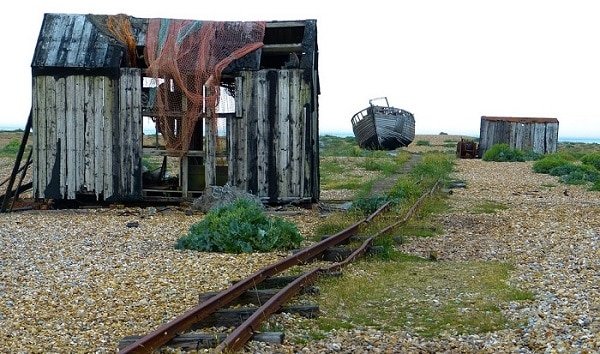
Dungeness
The hamlet of Dungeness lies on a shingle headland at the edge of Kent’s Romney Marsh. It is probably best known for its nuclear power station and as the former home of filmmaker Derek Jarman. I had first visited Dungeness as a child and was distinctly unimpressed by the lack of sandy beach or of any amusements. Returning as an adult, those are some of the very things I now appreciate about it. As the landlord at my AirBnB in New Romney said, “Dungeness is a special kind of place, with a special kind if people.” Its isolation is its attraction and has been for centuries. It is what made it a popular haven for smugglers in the past, and why it attracts those keen to escape city life today.
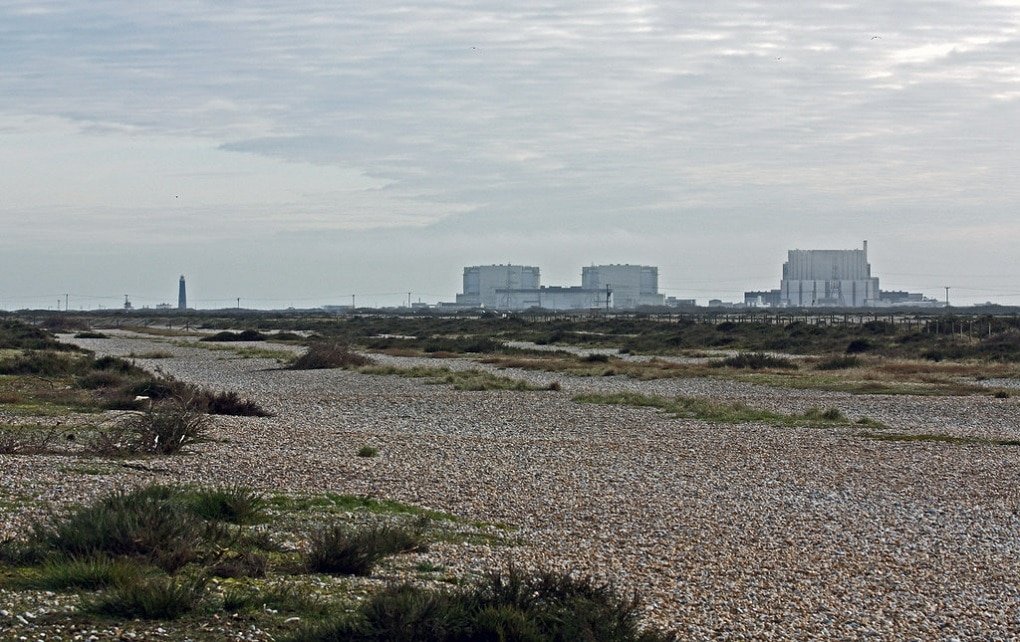
Dungeness is often described as Britain’s only desert. Technically, this is incorrect. The region is not officially a desert (too much rainfall). However, as one of Europe’s largest expanses of shingle, it does have a special importance in the world of nature conservation. Dungeness, and the neighbouring Romney Marsh and Rye Bay areas, hold a number of designations, including Site of Special Scientific Interest, Special Area of Conservation, and National Nature Reserve. Despite its desolate appearance, this area is home to more than 600 plant species (that’s one third of all those found in Britain!) You’ll also maybe catch of glimpse of some of the rare moths, beetles and other insects that are found here and nowhere else in the country. The Sussex Emerald Moth only lives at Dungeness. Or perhaps you will see a rare Pigmy Footman Moth or a Great Crested Newt.
Walking
The best way to explore Dungeness and see some of its varied wildlife is to take this 7.5 mile walking route through the Nature Reserve and along the shoreline. Much of the path, such as it is, is across shingle and so your legs will get a pretty good workout. There are few, if any signposts, although if you look closely in such areas, different colour shingle helps to delineate the path. On the other hand, the landscape is so flat, that it’s honestly difficult to get lost.
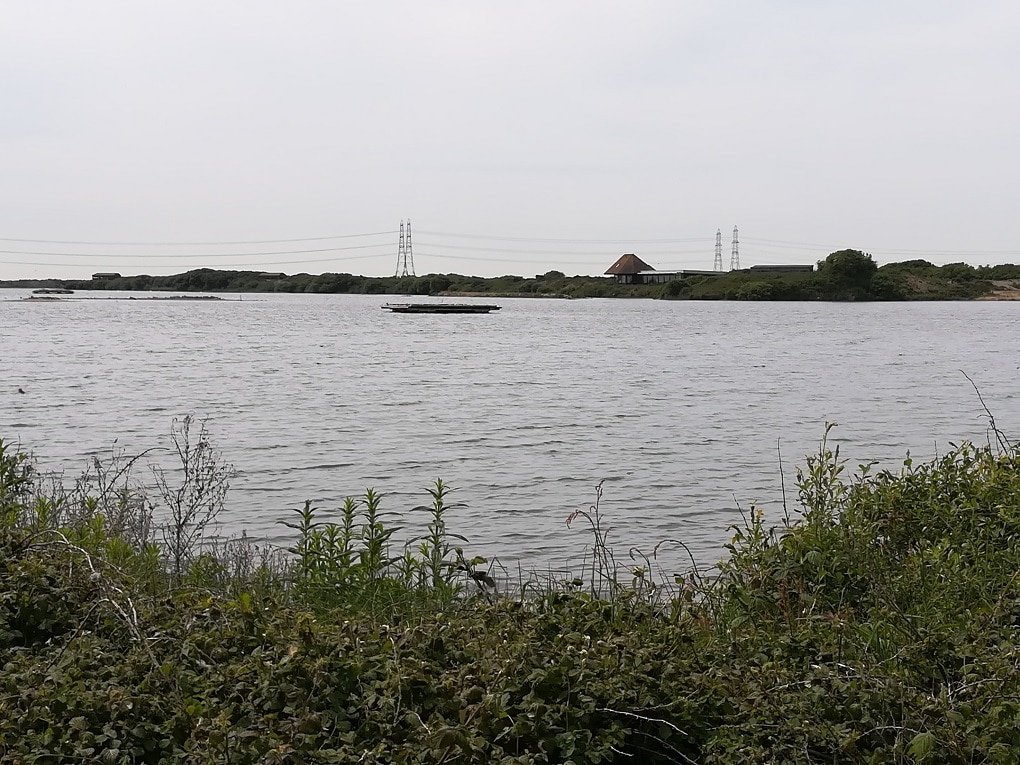
The walk starts at the car park next to the station and cafe for the Romney Hythe and Dymchurch Railway. Walk past the old lighthouse and toward the fence that surrounds the power station. From here the footpath leads across Denge Beach and to Boulderwell Farm. Along the way, we saw tiny wild orchids, gorse bushes, foxgloves, and all sorts of cabbage-looking plants.
Once you reach the farm, you hit a grassy path through the RSPB reserve. Signs in the reserve often indicate what birds have been recently spotted. We were lucky to see a heron on her nest, and to hear the booming call of the bittern as we strolled along. Eventually you meet a track that leads to the sea. Observe the markings for the Lydd Ranges, used by the military, and don’t cross into any forbidden areas.
The track leads all the way down the other side of the power station to the beach, where you will see a sign for the England Coast Path. From here, you turn left and follow the shoreline back around to the point where you can see your starting point and the lighthouse on the left.
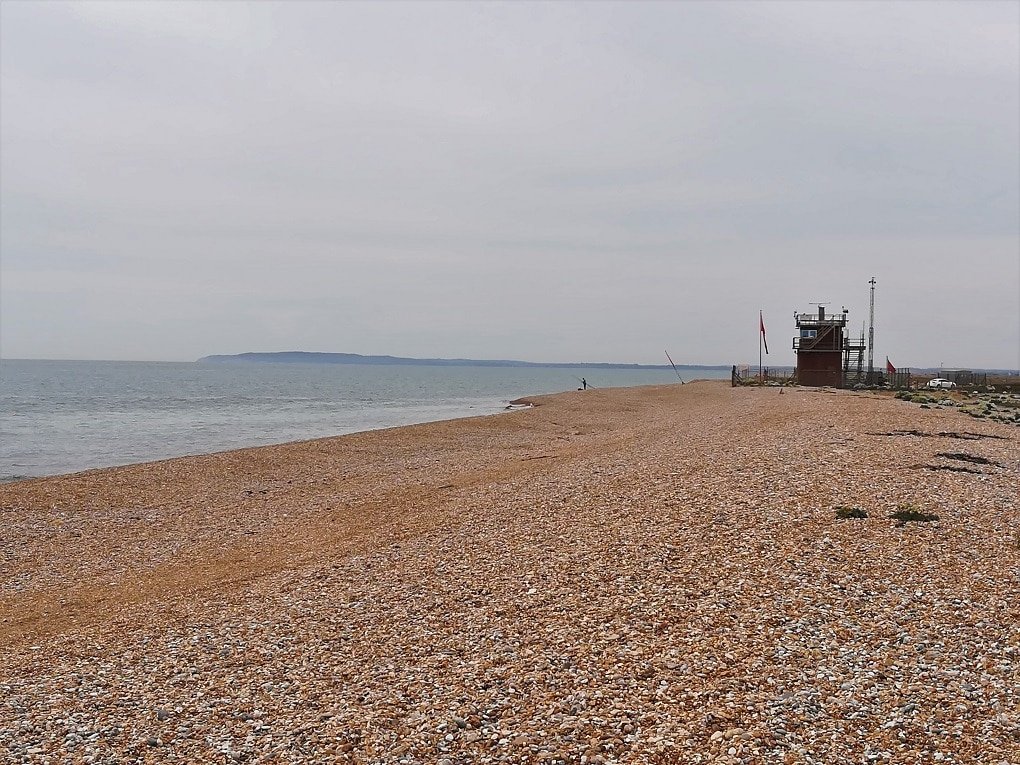
The walk is not particularly strenuous, except for the shingle. On your way, you are likely to pass a number of birdwatchers and artists. And be sure to pay attention to the wildlife. The landscape may look rather post-apocalyptic but it is full of unexpected colour and activity.
What to Do, Where to Eat
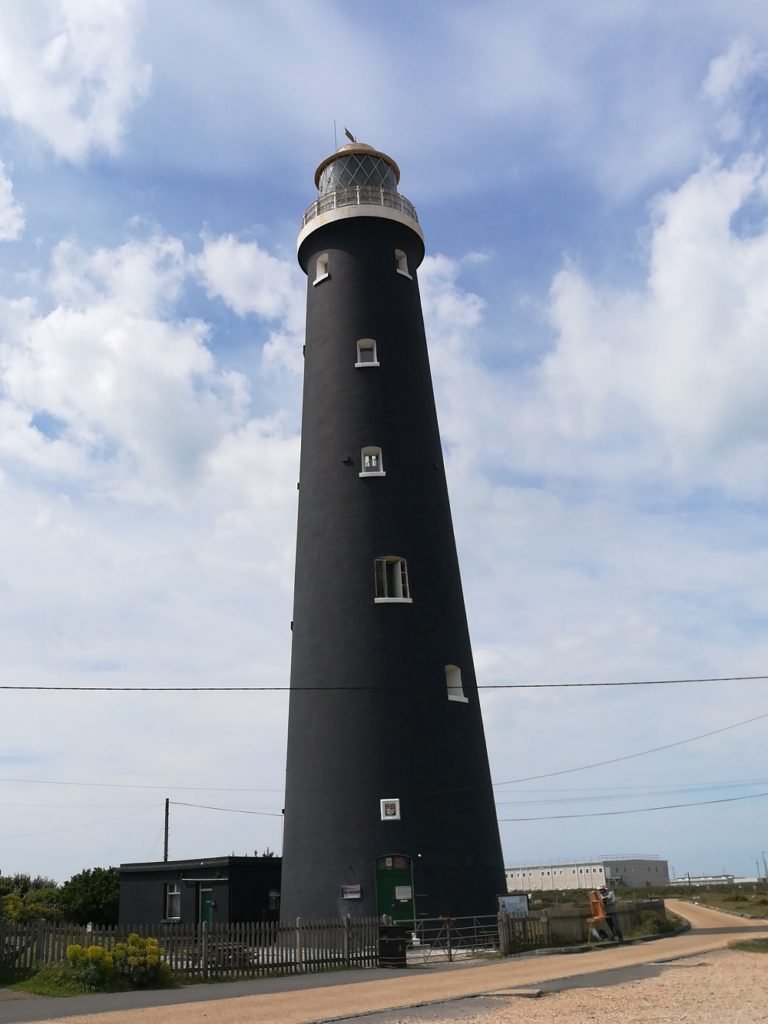
If walking on all that shingle hasn’t tired your legs out completely, visit the lighthouse and climb to the top for a view across the English Channel and the Romney Marsh. Opening hours vary throughout the year so be sure to check the website. Access to the top may also be closed during adverse weather conditions.
In the 1980s and early 90s, filmmaker Derek Jarman frequently fled the noise of London for his cottage in Dungeness. And it was in this most unlikely of places that he created a most unlikely garden. Although Jarman died in 1994, the garden has been carefully maintained. A mixture of wild flowers, coastal grasses, driftwood, and rocks, it is an eyecatching sight as one passes through the area.

There are two roads that take you to Dungeness, one from east to west, the other north to south. The Pilot Inn stands where the two meet. Rescued fragments of a World War II bomber are on display in the garden. Inside, you’ll find an excellent menu and a wide selection of drinks, including local beers. I highly recommend the fish and chips. Be warned, though. The portions are huge! I had been pre-advised to order the medium and was glad that I had done so.

The mainline railway stopped carrying passengers to Dungeness in 1937, but if you don’t want to reach the headland by road, there is still another alternative. The Romney, Hythe, and Dymchurch Railway is a one-third size heritage railway that terminates at Dungeness. Steam and diesel locomotives run up and down the coast throughout the year, and a number of special events are also held. Check the schedule online for services dates and times. The End of the Line Restaurant is open, with a cafe, gift shop, tourist information, and toilets. It’s a good spot to stop for a bite before or after a walk, or when waiting to hop on the train.
Where to Stay
Despite Dungeness’ size and isolation, there are a few lodging options here. Some old railway cars and other buildings have been bought and restored and are available for rent, largely through AirBnB. More options – hotels, self-catering, etc. – are available in nearby Rye and New Romney. You can also find cottage rentals in the area with Holiday Cottages.



One thought on “Dungeness: A Very Different British Landscape”
Comments are closed.